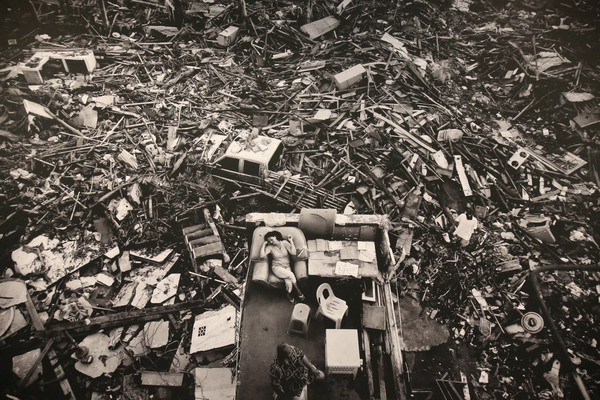

Lending a helping hand always comes before taking a perfect photo at a disaster scene, according to Kevin Frayer, a renowned Canadian photojournalist.
"I think as a human being I think your first reaction will be if you are the only person there to help or the most capable person there to help; if there are other people there who are not capable of helping – I think it is a matter of accessing the situation," said the 41-year-old Beijing-based freelance photographer.
"I think in the end, nobody's life is worth our picture. There is no excuse to let so many lives die if you need to take pictures of it."
Frayer made the remark at a photography summit, which was part of the awards ceremony of the 10th China International Press Photo Contest (CHIPP), at Hui'an county, Quanzhou city in East China's Fujian province on Dec 6.
Frayer then shared a story to attest to his belief. He was once travelling with a US army in Afghanistan. A soldier got severely hurt and there were not enough paramedics. Frayer put his camera aside and became a temporary nurse taking care of the wounded. He called that a lifetime experience.
Having been a photographer for 23 years, Frayer made a name for himself by documenting wartime events through the lens in the Middle East from 2003-2009. And his photographs of Palestinian protesters caught in a tear gas assault won a prize from the World Press Photo awards in 2009.
Frayer's work Typhoon Haiyan won the Picture of the Year and the gold prize at the War & Disaster News Stories categories at CHIPP.
 |
| Photo Of The Year:Typhoon Haiyan by Canadian photographer Kevin Frayer. |
Winning laurels, however, is not what drives the photographer forward. The possibility of dilivering first-hand messages assisting others through his work is.
Speaking on how to balance a disaster scene and the victims in a photograph, Frayer suggested highlighting either of them based on specific situations.
When Frayer was in the Philippines taking pictures after the Typhoon Haiyan, he noticed that people there stayed tough and calm. They didn't weep too much outside and just remained in a silent pain. That was different from (another disaster scene) he had seen in Bangladesh where the local people let out all their grief and agonies.
So in order to reflect the post-disaster scene in the Philippines more comprehensively, he decided to put more focus on the background, while the people only accounted for a small portion of the photos. Frayer said he wanted to show the world how bad the Philippines was ravaged by Haiyan.
After the photos were published they triggered strong reverberations. And assistances and donations from many countries like China and the United Stated kept pouring in to the Philippines, he added.
Being a war or disaster reporter is arduous and sometimes life-threatening. 108 press workers died during those events in 2013. But that figure doesn't affect Frayer's pursuit of the glorified cause.
"I am doing a lot of wartime and disaster photographs because they are going to be remembered and recorded in history."